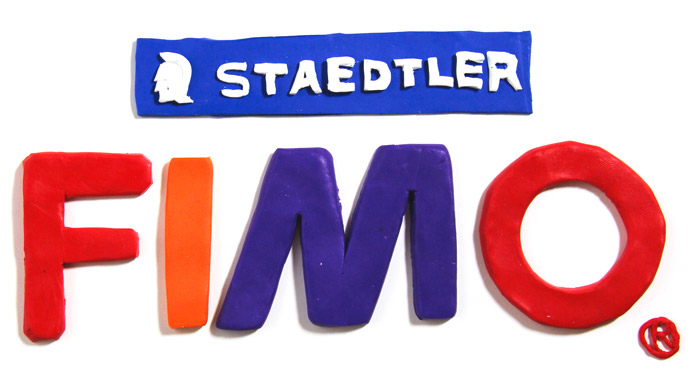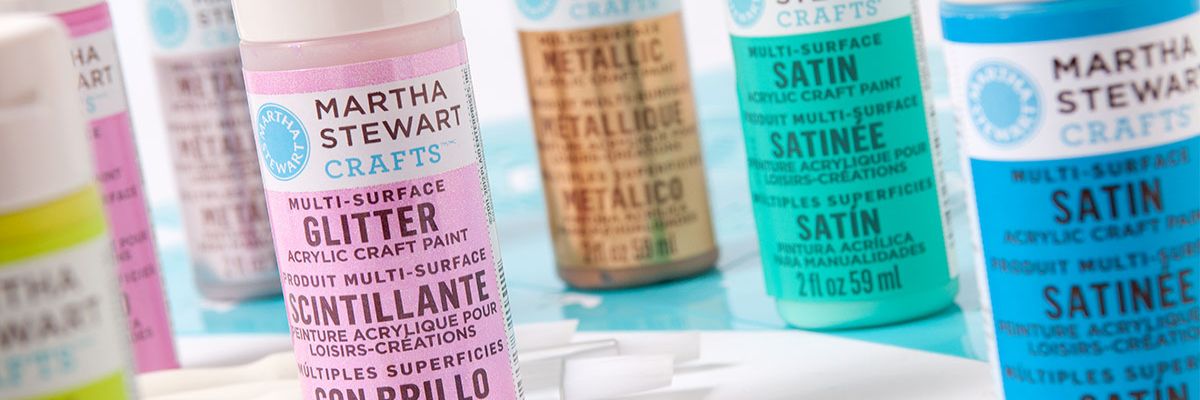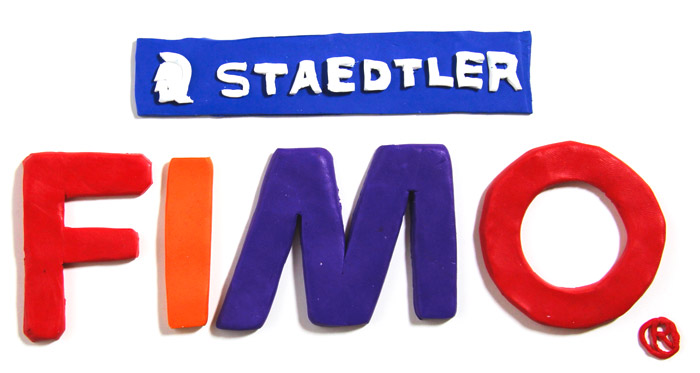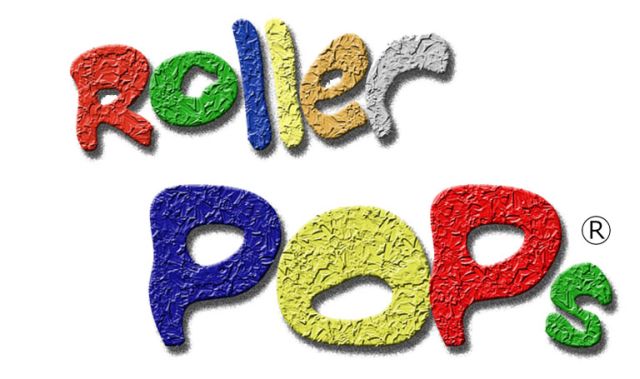Fimo
Polymer clay is a synthetic clay, versatile and easy to handle, which contains PVC and plasticizers.
FIMO meets U.S. safety standard ASTM D-4236. Because of the structure particularly Fimo Classic should be kneaded well (or use Quick Mix) Fimo Soft is easier to handle. Once smooth it is ready to be modeled.

General instructions:
Fimo can be modeled by hand and by using the existing tools (eg to obtain finer details). It is important to smoothen the polymer clay before sculpting . This is done by kneading, so that any air from the clay disappears. The clay gets smooth through your body heat. Don't place the clay on the heating or in the sun because it makes the clay rather grainy.
It is not recommended to kneed a whole block atonce. A block has 8 subdivisions. It is better to knead two or more parts, which is faster. Roll the clay into strips and twist them together. Make a ball and repeat this several times. Also in the pasta machine you can knead the clay by passing it several times through the machine.
Colors are mixable together to obtain for example marble or pastel shades .
You are now ready to model.
Put your creation on a glass plate or aluminum foil and bake it for 30 minutes in an oven at 110 ° C. Your creation will only get really hard after cooling at room temperature.
To put Fimo pieces together or sticking to glass or metal, use epoxy glue.
Take care that Fimo is not exposed to temperatures above 130 ° C.
When baking at 110 ° C, no gas is developped. The odor that sometimes is perceived is an entirely harmless Fimo flavor. If Fimo is exposed to temperatures above 200 ° C hydrochloride gas can be released. This gas is already observed in very small amounts because even in small amounts it has an offensive odor.
After use the remaining Fimo can be retained by wrapping it in aluminum foil or plastic film and store at room temperature. Don't put it in the sun or come into contact with polystyrol, PVC, polystyrene.

























